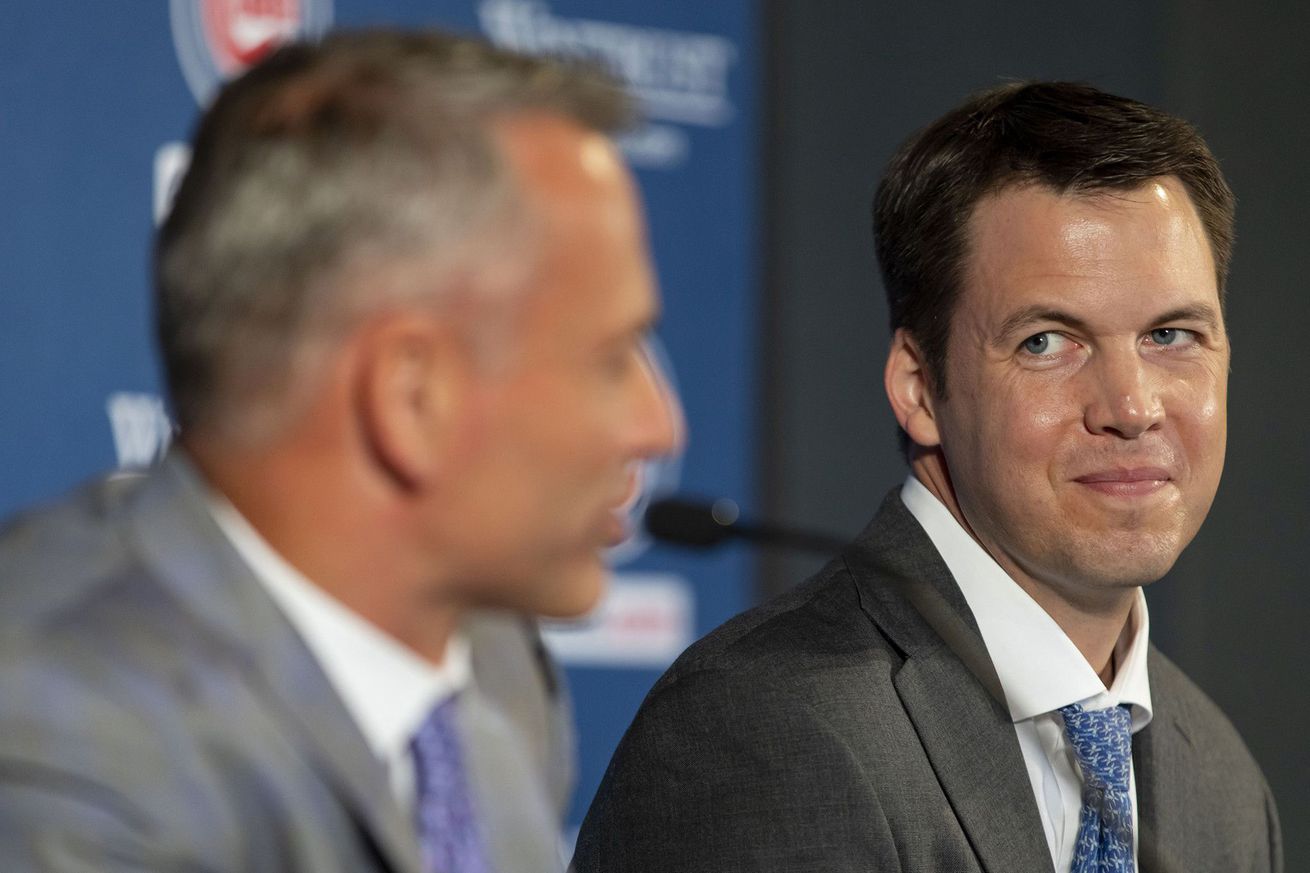
But you’re probably going to be disappointed if you wanted concrete answers
The first panel Saturday morning at Cubs Convention was a conversation with Jed Hoyer and Carter Hawkins, just as it has been every year since 2022. Having watched a few of these now there’s a predictable cadence to the affair. Jon “Boog” Sciambi asks some questions for about half the session, fans get a chance to ask questions afterwards and one of those fans is always Paul Dzien, who you likely know better as Crawly. Answers about specific players and positions are rarely super transparent or forthcoming, but there are kernels of information if you look hard enough.
This morning’s chat with the front office had a similar vibe to previous years, but with an undercurrent of urgency and defensiveness in some answers that I don’t remember from previous years. You’ll see what I mean in some of the answers below.
On the Kyle Tucker trade
Jed Hoyer discussed how their trade for Kyle Tucker came together after the general manager meetings and how they’d assumed Tucker wasn’t available, but once they found out he was they were very interested. You can hear his answer in full below [Bluesky link].
“He was a very short list of guys that significantly upgraded us.”
Jed Hoyer details how the Kyle Tucker trade came about.
On Matt Shaw
There were also questions about third base that are similar to the questions we’ve been asking here at Bleed Cubbie Blue. The bottom line is that rookie Matt Shaw will get a chance to compete for the everyday role this Spring. Jed acknowledged that they’d need a “safety net” to ensure there was plenty of backup at the position and talked about the need for depth. But for those of you filling out your depth chart at home, it seems like the job is Shaw’s for the taking.
On the bullpen
The lack of bullpen depth in 2024 came up a couple of times with Boog cracking jokes that Jed should take any calls from Tanner Scott’s agent. As much as I would love the Cubs to sign Scott, I doubt that’s the relief signing we’ll see as fans. When a fan followed up with stats about blown saves and the need for higher leverage arms in the bullpen, Jed discussed finding “hidden gems” and the success they’ve had there in previous years while admitting last year was not one of those years. You can see the answer in full below [Bluesky link].
Jed Hoyer on the Cubs acquiring a high-leverage bullpen arm this offseason.
On cutting their scouting
One of the more frustrating non-answers of the panel was Jed Hoyer and Carter Hawkins discussing how and why they’ve cut so many scouts. You can read more about the state of the Cubs scouting department relative to the rest of the league in this excellent Baseball America survey. You may also notice in that piece that the teams who are most competitive combine the resources of data and scouting effectively.
Hoyer and Hawkins treated this more as an unfortunate personnel situation than a set of decisions that risked putting the Cubs behind other clubs in terms of data and information. Both tried to make the case that data and video provide more than enough data about players. They claimed data shifts and they’ve just adapted with the times. It certainly is the case that Statcast provides data at an individual pitch and swing level that was previously unavailable and that they can learn as much from video as they could sending a guy to High-A or Triple-A games and explained they’d focus their scouting efforts on the complex leagues.
On park effects
One of the more confounding elements of 2024 was the extreme park effects that stifled offense at Wrigley Field. It came up in the coaching panel multiple times as well. Hoyer basically lamented that the Cubs can’t control the weather, and Boog cracked a joke. They discussed the mental toughness players needed to overcome yet another day of wind in their face.
Honestly, that was a perfectly acceptable answer so I was surprised when Carter Hawkins jumped in to volunteer that despite the skepticism from many circles when they traded for Isaac Paredes given his inability to make hard contact and extreme tendency to sneak pulled fly balls down the line at Wrigley Field that other park effects, like foul territory differences at Wrigley and the Trop were important as well. It was a curious thing to volunteer on a very different question than had been asked. Hawkins also didn’t really specify why he thought lofted balls that were once foul could result in anything other than outs given the 10 extra feet at Wrigley, or perhaps he was referring to the fact that Paredes hit foul outs that would be mere strikes at Wrigley prolonging his at bats. Either way, it was a rare moment of volunteered defensiveness from a front office that is generally averse to divulging additional information.
I’ll have a write-up of Craig Counsell’s substantially more informative coaches panel coming up later this afternoon.
